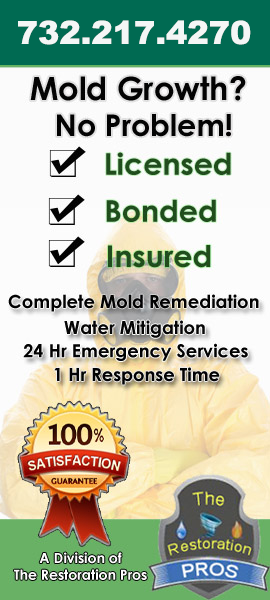How to Get Rid of Molds That Grow in Your Crawl Space
Musty smells around the house are a good indicator of molds. You’ve checked everywhere in the house, and you haven’t found any signs of molds. Baffled by this situation, you decide to take a look at your crawl space. The area is really not inviting, but it’s the only place you haven’t checked to confirm the presence of mold.
You take your flashlight to look over your crawl space, and there, you see the source of the awful smell that has been imminent in your house. Right off the bat, panic starts crippling in; what are you supposed to do? You can call for professional help or get your hand dirty and remove the molds yourself.
In a DIY project, removing molds from crawl spaces is quite straightforward. You’ll, however, need to be careful and wear the required safety gear while undertaking the cleaning process. Before we look at the steps of how to remove molds from the crawl space, let’s first look at the telltale signs of mold growth in a home.
Telltale Signs of Molds in Your Crawl Space
Humid environments usually foster the growth of molds in any area around the house. Crawl spaces are no different. The effects are massive as it quickly permeates wood, causing structural damage, and health issues. Here are telltale signs of mold growing in your house:
- Strong Musty Odors: You’ll notice a weird smell that moves upwards through the first floor.
- Allergic Reaction: It’s not surprising that you have some allergen flares; this could be due to molds growing around your house.
- Moldy Baseboard: Molds will start growing from your crawl space and then spread to the baseboards on the floor above.
- Discolored Crawl Space: The crawl space will appear to have fizzy, slimy, or powdery patches.
Six Steps to Removing Molds on Crawl Spaces
If you are concerned about black mold growth, hire a professional mold removal contractor. Before commencing the DIY project, you must wear the necessary protective gear.
Assessing the Situation
Take a look at the gravity of the damage, then go ahead and start preparing the area for the cleaning projects. First, you’ll set up lights on the area and then lay down plastic to catch areas affected by molds.
Spray Foam on the Area
Spray a foam cleaning product on the affected area, especially those that are pretty much formulated for mold removal. Let it settle to allow it to loosen the molds. Afterward, you can go ahead and clean the area.
Soaking with a Mold Killer
Stubborn molds that haven’t been removed at this point can be soaked in a mold-killing mixture or a cleaning agent. Commercial mold cleaners are more effective in removing mold stains.
Scrubbing Off the Residue
Dry off the area, then using a brittle, you can scrub off the remaining residue. The process can be time-consuming but effective in removing the remaining residue.
Clear Out Everything
Fold the plastic sheet you initially laid out and seal it in a trash bag. Dispose of the coveralls, contaminated gears, and brushes using the same procedure. Store the items outside until trash pickup day.
Control the Crawl Space Environment
Controlling the crawl space environment can be done in various ways. A dehumidifier is effective in controlling crawl space climate. Use a model that’s suitable in tight spaces. Make crawl space inspection part of home maintenance.
Bottom Line!
Mold is a toxic contaminant that can cause health issues if left unattended. Therefore, you can evade all these problems by controlling the climate of the sprawling space to discourage mold growth.





